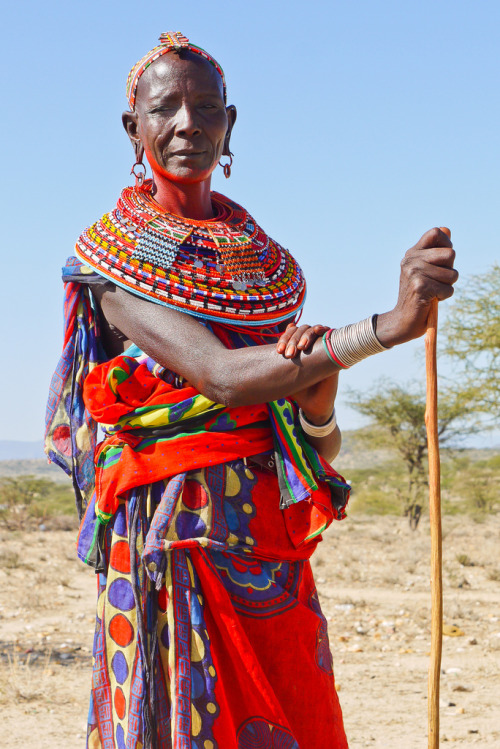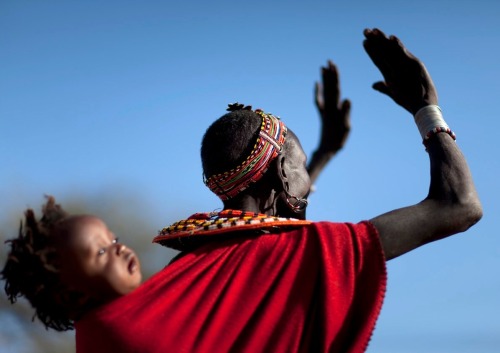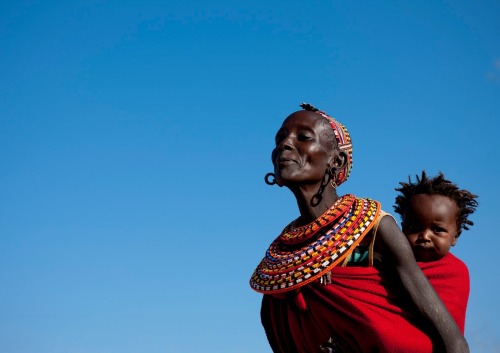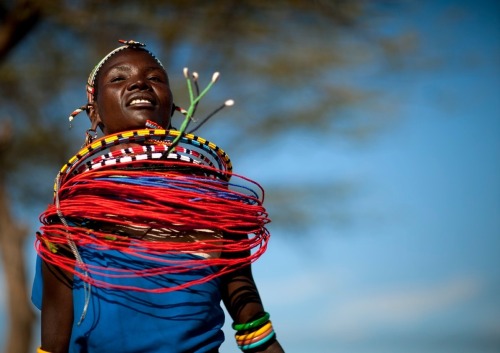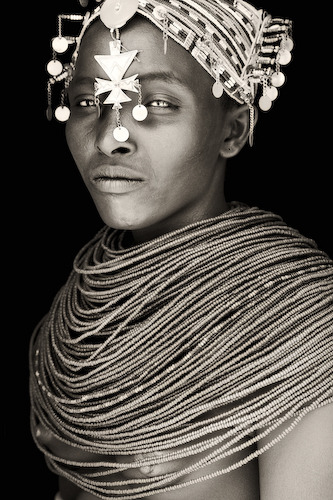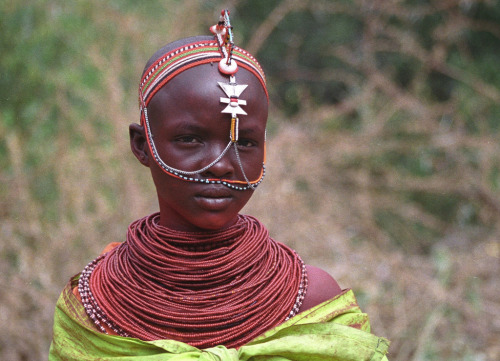Samburu/Lokop/Loikop womenThe Samburu are a Nilotic people of north-central Kenya. They are a sub tr
Samburu/Lokop/Loikop womenThe Samburu are a Nilotic people of north-central Kenya. They are a sub tribe of the Maasai. The Samburu are semi-nomadic pastoralists who herd mainly cattle but also keep sheep, goats and camels. The name they use for themselves is Lokop or Loikop, a term which may have a variety of meanings which Samburu themselves do not agree on. Many assert that it refers to them as “owners of the land” (“lo” refers to ownership, “nkop” is land) though others present a very different interpretation of the term. The Samburu speak the Samburu dialect of the Maa language, which is a Nilo-Saharan language. Women traditionally wore two pieces of blue or purple cloth, one piece wrapped around the waist, the second wrapped over the chest. Women keep their hair shaved and wear numerous necklaces and bracelets.In the past decade, traditional clothing styles have changed.Some women still wear two pieces of blue or red cloth, but it has become fashionable to wear cloths with animal or floral patterns in deep colors. Women may also often wear small tank tops with their cloths, and plaid skirts have also become common.The distinctive feature of the Samburu is the amount of jewellery, especially colourful multi-beaded bracelets, anklets and necklaces they wear, both men and women. The Samburu are famous for the countless necklaces that the girls wear. These coloured multi-bead necklaces are a symbol of beauty and reflect the social status and wealth of the wearer. In the Samburu culture the more necklaces women wear the more they are considered beautiful, and it also identifies their wealth and civil status.The girls receive the first necklaces from their father when they are very young. They are usually red in colour, which means that the father has promised to marry the daughter to an already identified man. But despite a girl being already committed to marriage, the Samburu teenagers enjoy a fairly broad level of sexual freedom and girls can have Moran (warrior class) boyfriends.The Samburu young warriors also give necklaces as a gift to show their love to a girl or the one with whom they have a steady relationship. This girl in the Samburu language is called nekarai, i.e. not married girl. The necklaces are expensive for their standard of living, i.e. up to 100 US dollars for a single piece. When a girl gets married she has to return the necklaces to her boyfriend, and after that she wears heavy brass earrings that in the Samburu culture symbolize marriage. Whenever she gives birth to a son, she adds a ring to these earrings.The Samburu women spend much of their time making jewellery, necklaces, anklets and bracelets with coloured beads; in the past they used coloured seeds, pieces of old tires, copper, brass and iron wire instead of beads. The colours have a specific meaning: white stands for purity and health because it is associated to cow’s milk; black means discomfort; yellow and orange are the colours of hospitality; while red means danger, courage and unity. In some cases, the necklaces are used as magical amulets. For example, if a woman is infertile, or presumed as such, she will receive a collar of pearls from the wizard that will allow her to give birth to her children. 10. Photo by Sergey Agapov -- source link
Tumblr Blog : sartorialadventure.tumblr.com
#fashion#samburu#lokop#loikop#samburu fashion#jewelry#african fashion#subsaharan africa
